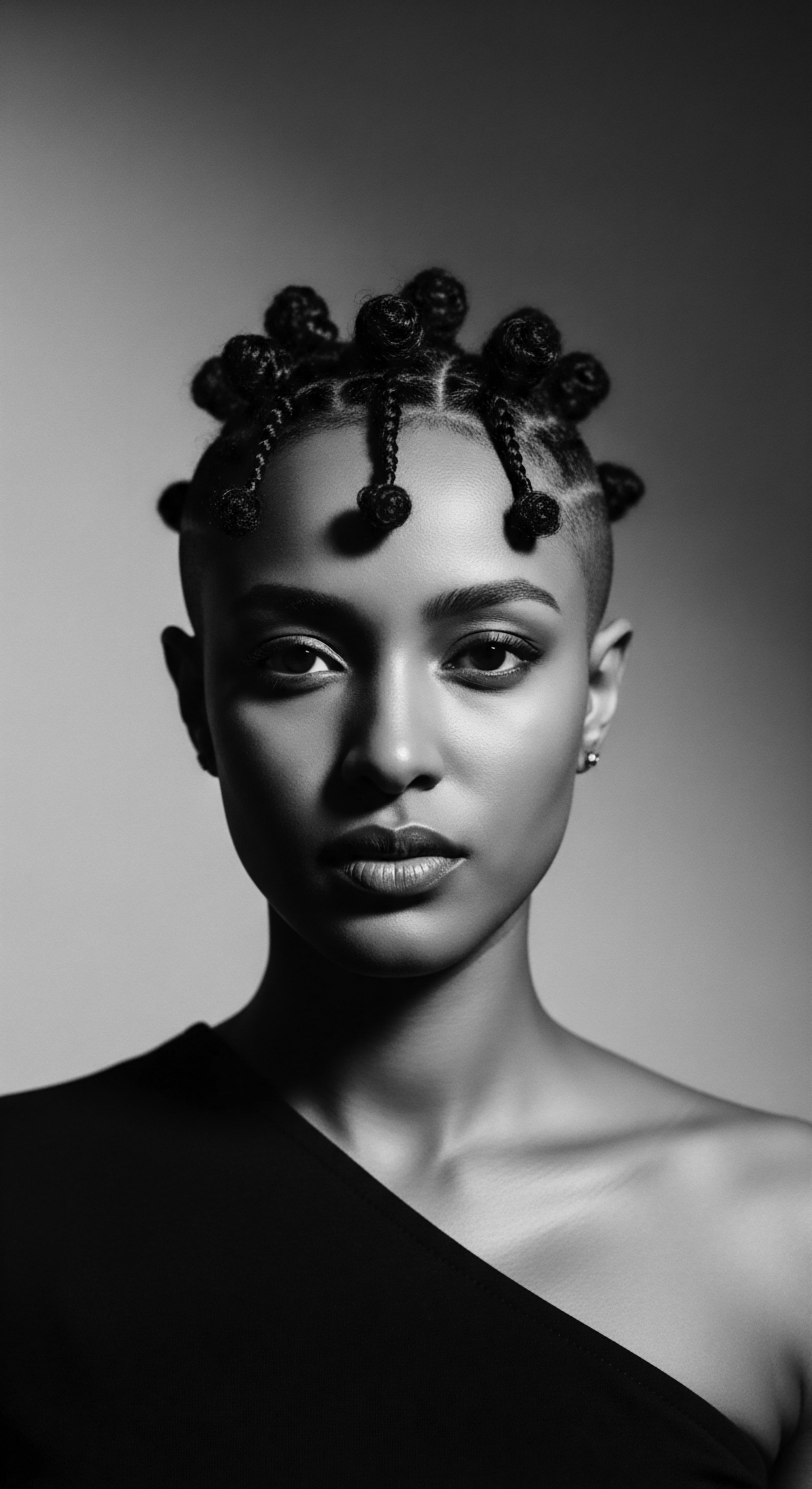
Roots
The very air around us hums with stories, if only we learn to listen. For those with hair that coils, that kinks, that spirals heavenward, the strands themselves whisper tales of resilience, of ancestral journeys, of wisdom passed down through generations. These strands are not simply adornment; they are a living archive, each curl a testament to the journeys of our people, each fiber holding the memory of hands that nurtured, protected, and revered. It is here, within this profound connection to textured hair’s heritage, that we seek understanding of lipids, these molecular sentinels, as fundamental to hair’s defense against the world’s thirsty embrace.
Consider, for a moment, the hair strand from its elemental form, an extension of self. At its core, beneath the vibrant expressions of style and identity, lies a complex architecture. The hair fiber is comprised primarily of proteins, yes, but interwoven within its very being are lipids, the silent guardians of its integrity. These lipids exist both internally, within the hair shaft, and externally, forming a protective surface layer.
They are integral to maintaining the hair’s structure, its inherent hydrophobicity, and its capacity to hold moisture. A closer study of various hair types across the human family reveals distinctions that speak volumes about adaptation and environment.
Lipids, within the intricate architecture of textured hair, stand as ancestral guardians against moisture’s fleeting nature.
Research has shown that Afro-textured hair, for instance, possesses the highest overall lipid content when contrasted with European and Asian hair types. African hair can have up to 2.5 to 3.2 times more lipids than European and Asian hair, respectively. This may seem surprising, given the common perception and lived experience of textured hair often being described as dry or very dry. The reason, a deeper inquiry reveals, lies not in the mere quantity of lipids, but in their arrangement and distribution within the hair fiber, particularly their ordered or disordered state.
The lipid molecules, such as fatty acids, ceramides, glycolipids, and cholesterols, form a laminated structure, a barrier against external influences. The efficiency of this barrier is influenced by how these molecules are organized.

What is Unique about Textured Hair’s Internal Structure?
The distinct curl patterns of textured hair—from loose waves to tight coils—mean that the hair shaft itself is not uniformly cylindrical. This helical structure results in points of curvature where the cuticle layers, the outermost protective scales of the hair, may be less tightly packed or more exposed. This physical reality has implications for moisture retention. While lipids are abundant, their distribution might be less cohesive along these curves, creating pathways for water to escape.
Additionally, the medulla, the innermost portion of the hair shaft, which itself contains lipids, also contributes to hair volume, strength, and elasticity. The cuticle layers and the cell membrane complex, which glue the hair cells together, are also rich in lipids like 18-methyleicosanoic acid (18-MEA), which provides a hydrophobic surface.
| Hair Type Afro-Textured Hair |
| Total Lipid Content Highest overall (2.5-3.2x European/Asian) |
| Moisture Interaction Paradoxically prone to dryness, higher water diffusion rate, lower lipid order |
| Hair Type European Hair |
| Total Lipid Content Lower total lipid content |
| Moisture Interaction Higher hydration, lower water diffusion coefficient, higher lipid order |
| Hair Type Asian Hair |
| Total Lipid Content Lowest total lipid content |
| Moisture Interaction Lower water diffusion coefficient, lower lipid content overall |
| Hair Type Understanding these intrinsic lipid differences helps explain varied moisture retention behaviors across hair types, grounding modern hair science in physiological reality. |
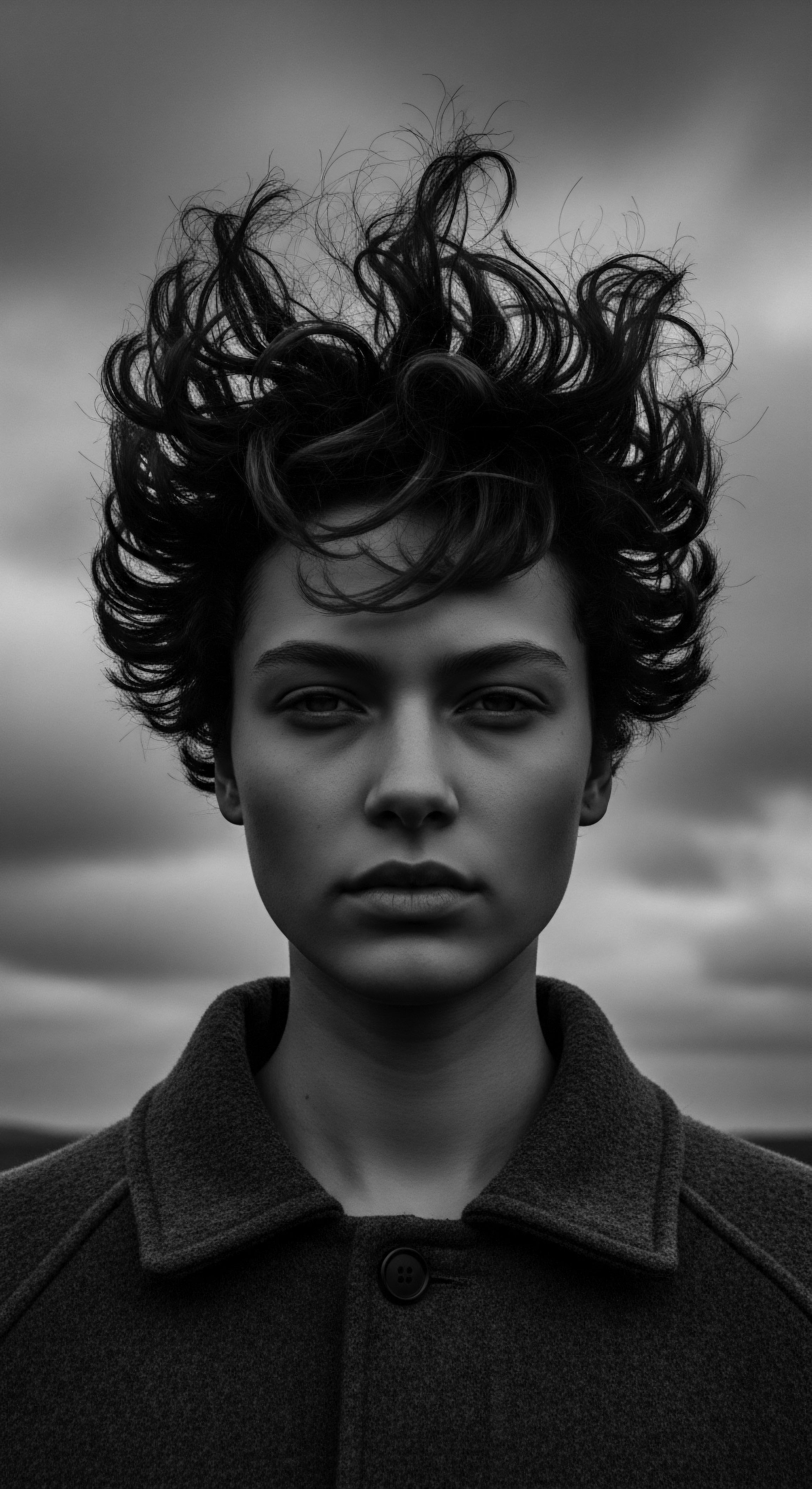
How Did Ancestral Wisdom Guide Early Hair Care?
Long before the language of lipids and cuticle layers entered our lexicon, our ancestors intuitively understood the vital role of natural oils and butters in sustaining hair health. Across Africa, traditional hair care was a sacred act, a communal practice rooted in deep observation of nature’s bounty. For instance, women of the Himba tribe in Southwestern Namibia have, for centuries, sculpted their hair with a mixture of ground ochre, goat hair, and butter, creating dreadlocks that signify age and marital status. This practice, while artistic and culturally significant, also served to coat and protect the hair.
In ancient Egypt, hair care practices were highly refined, often reflecting status and spiritual connection. Castor oil, known for its conditioning properties, was a staple, mixed with honey and herbs to create hair masks that promoted growth and luster. Almond oils were also applied to keep hair smooth and moisturized.
These ancient applications of plant-derived lipids speak to an inherited understanding of what hair needed to thrive in harsh climates. The act of applying these emollients was not merely cosmetic; it was a self-care ritual, a link to tradition and well-being.
- Shea Butter ❉ A revered emollient from West Africa, used for centuries to protect hair from sun and environmental stressors, valued for its fatty acids and vitamins that keep hair soft and hydrated.
- Coconut Oil ❉ A ubiquitous staple in many traditions, known for its ability to penetrate the hair fiber and provide deep moisture.
- Castor Oil ❉ Widely used in ancient Egypt and still valued for its moisturizing and strengthening properties, often applied with heat for deep penetration.
This ancestral knowledge, passed down through generations, laid the groundwork for contemporary understanding. The properties recognized in these traditional ingredients align with modern scientific findings on lipid function ❉ creating a barrier, conditioning, and sealing in moisture. The knowledge from the past does not simply sit in history books; it lives in the practices and products that continue to sustain textured hair today, a testament to the enduring power of heritage.
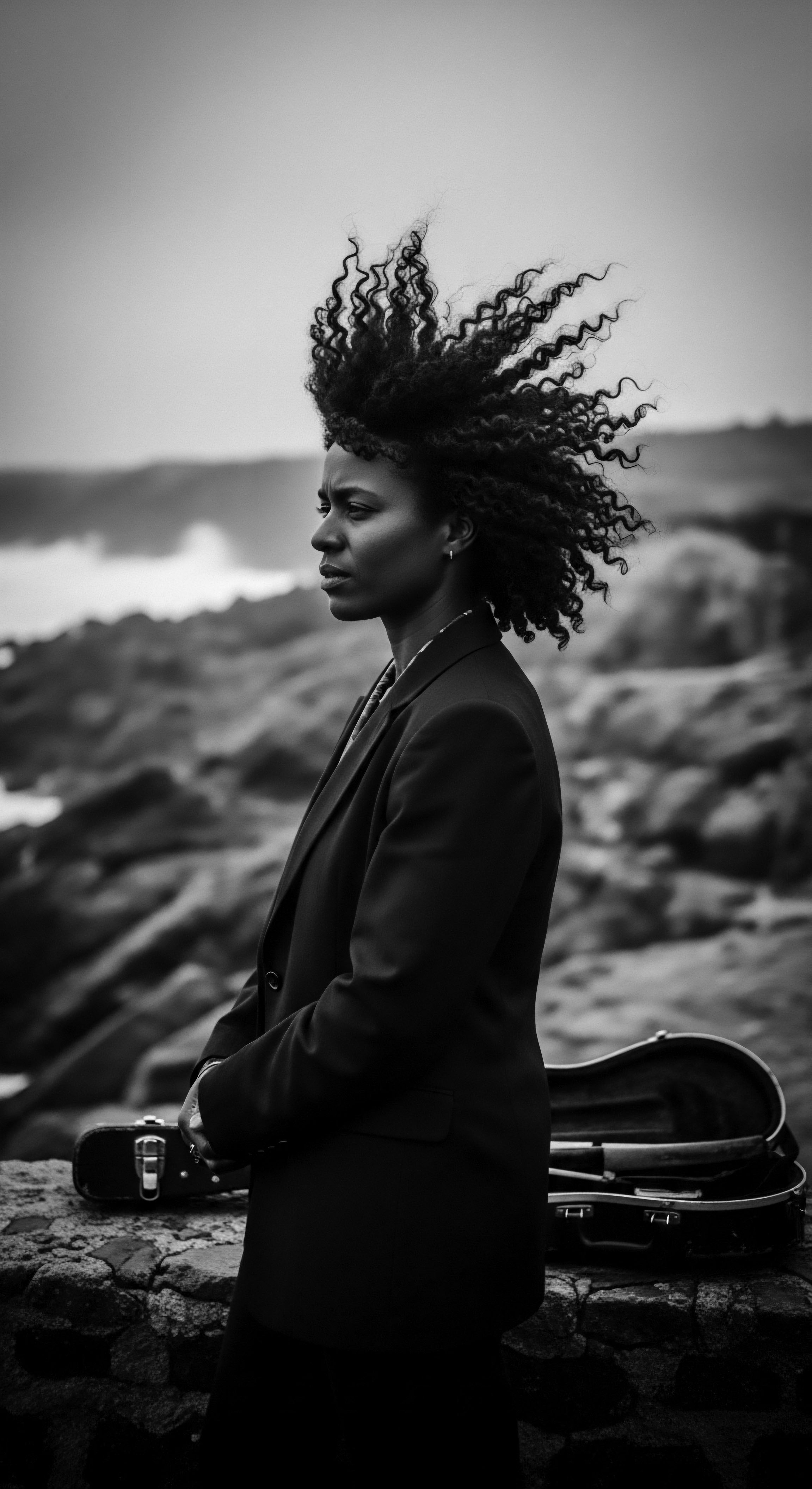
Ritual
The hands that braid, the fingers that coil, the communal spaces where hair finds its shape—these are the sites of ritual. In the heritage of textured hair, styling is not just an aesthetic choice; it is a profound act of care, a conversation with the self and the community, and often, a strategic defense against moisture loss. This deeper exploration of hair ritual reveals how the application of lipids has long been interwoven with techniques designed to preserve the hair’s delicate balance.
Historically, and still today, many traditional styles serve a dual purpose ❉ beauty and protection. Braids, twists, and various forms of updos are not merely decorative. They safeguard the hair, particularly its vulnerable ends, from environmental aggressors, friction, and daily manipulation that can strip away vital moisture.
This practice, known today as protective styling, has deep roots in African hair traditions. The wisdom of tucking away the hair to shield it from harsh elements is an ancestral one, a technique honed over centuries to prolong moisture and minimize breakage.
Protective styling, an ancestral practice, inherently involves the strategic application of lipids to preserve hair’s moisture.
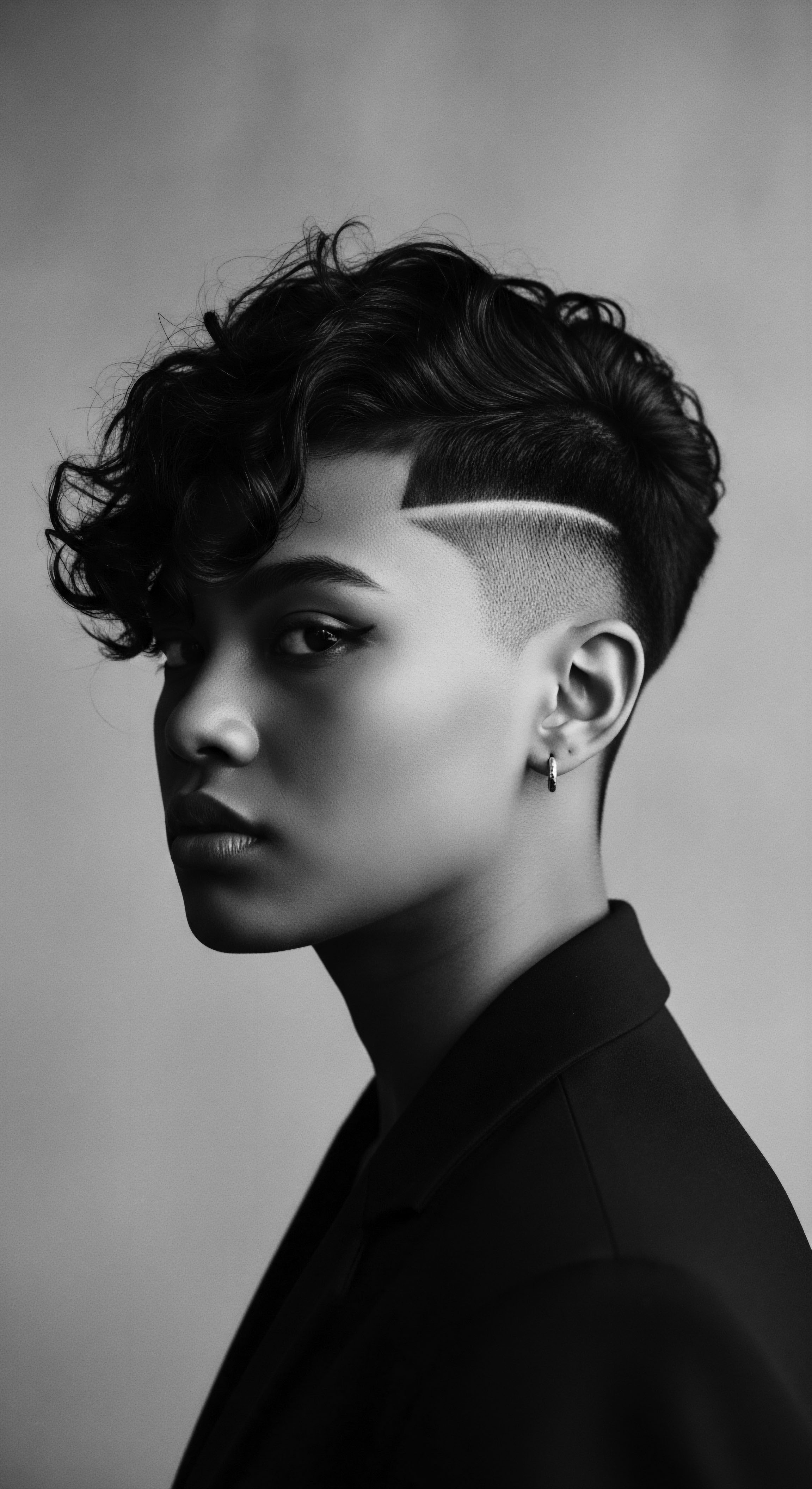
How Have Styling Practices Evolved with Lipid Use?
Pre-colonial African cultures developed elaborate hair artistry, using natural materials and techniques that directly supported hair health and moisture retention. Beyond merely styling, this involved the application of specific substances. For example, some Nigerian ethnic groups, like the Igbo, used palm oil and charcoal in their hair artistry, creating intricate structural hairstyles. While sometimes necessitating cutting the hair to undo, these applications speak to a deep understanding of natural elements for hair maintenance.
In places like Ancient Egypt, combs made from fish bones were used to distribute oils evenly through the hair, serving to moisturize and even aid in pest control. These historical tools and practices underscore the mindful way lipids were integrated into daily and ceremonial hair rituals.
The act of oiling or greasing the scalp has been a common practice amongst people of African descent for many generations, an intuitive response to combat hair dryness. This ritual extends beyond simple application; it is often part of a broader, communal experience. In many African cultures, braiding hair was and remains a shared activity among mothers, daughters, and friends, strengthening social bonds while simultaneously preserving cultural identity. During these gatherings, natural oils and butters were consistently used to keep the hair moisturized and pliable, allowing for the creation of intricate styles.
This communal dimension highlights a crucial point ❉ hair care, and particularly the use of lipids, was not an isolated act of vanity but a collective practice of care, wisdom, and continuity. The very act of applying oils and butters during these styling sessions helped to coat the hair, creating a barrier that slowed moisture evaporation.
Traditional African hair care practices often emphasized length retention and overall hair health over maximum curl definition, a priority that naturally lends itself to the sealing properties of oils and butters. The Chebe powder ritual from the Basara Tribe of Chad, for example, involves applying an herb-infused oil or animal fat mixture to the hair weekly. This practice is renowned for promoting extreme length retention by feeding emollients into the hair shaft, thus retaining moisture for extended periods. This demonstrates a time-honored understanding of lipids’ role in preserving the hair’s integrity and moisture balance.
- Braids ❉ Box braids, cornrows, and Fulani braids historically and contemporarily serve to protect hair ends from exposure and friction, making them a cornerstone of moisture preservation.
- Twists ❉ Two-strand twists and Senegalese twists encapsulate moisture within hair sections, reducing tangling and aiding in moisture retention.
- Bantu Knots ❉ Sections of hair twisted into small knots, a protective style that historically sealed in moisture and minimized manipulation.
These methods, deeply rooted in ancestral wisdom, showcase a practical, hands-on understanding of how to use natural lipid sources to maintain hair’s hydration and strength within challenging environments. The ritual of styling becomes a direct extension of the hair’s defense mechanism, fortified by the very substances that mimic its natural protective barriers.

Relay
The wisdom of our ancestors, passed from hand to hand, from generation to generation, forms a continuous relay race of knowledge. This relay extends to the holistic care of textured hair, where lipids continue their journey from ancient practices to modern understanding, informing our approach to nighttime rituals and solutions for common hair concerns. The intrinsic structure of textured hair, with its unique challenges, finds its enduring ally in the strategic application of lipid-rich nourishment.
Textured hair, particularly coily hair, possesses a tightly coiled or zigzag pattern. This structure, while beautiful, makes it inherently prone to moisture loss, resulting in dryness and brittleness. The coily nature also obstructs the efficient distribution of natural scalp oils along the hair shaft.
This physiological reality underscores the essential role of external lipids in compensating for the hair’s natural predisposition to dryness. Intensive moisture treatments, gentle handling, and protective styling are paramount to maintaining its health and avoiding damage.
The ancestral wisdom of hair care, rooted in the strategic use of lipids, continues to shape and inform modern solutions for textured hair.

What is the Scientific Basis for Lipids Guarding Moisture?
Hair lipids, which constitute 1-9% of the hair’s dry weight, perform a vital function in protecting against environmental and chemical damage. They prevent hair breakage and thinning, and perhaps most significantly, serve as a barrier against moisture loss, enhancing shine, elasticity, and tensile strength. The presence of lipids is paramount for maintaining the hair’s integrity. Research has even indicated that extracting lipids from hair can lead to a considerable decrease in hair hydration.
Intriguingly, while Afro-textured hair possesses a higher total lipid content, studies reveal that it often displays a lower lipid order compared to European hair. This disordered arrangement can contribute to a higher water diffusion rate, despite the overall lipid quantity. This suggests that the quality and organization of the lipid barrier, not just its amount, are crucial for moisture retention. European hair, with its more ordered lipids, tends to be more resistant to moisture absorption and exhibits higher hydration levels.
This physiological insight bridges the gap between historical observation of textured hair’s dryness and contemporary scientific explanation. The external, sebaceous lipids play a prominent role in Afro-textured hair, unlike European and Asian types where internal lipids contribute more significantly.
| Traditional Ingredient/Practice Shea Butter |
| Heritage Context West African staple for centuries, protective and emollient qualities against harsh climates. |
| Modern Lipid Science Link Rich in fatty acids and vitamins, forms a hydrophobic barrier on the hair surface, sealing in moisture and softening the cuticle. |
| Traditional Ingredient/Practice Castor Oil |
| Heritage Context Used in ancient Egypt for strength and luster; often applied with heat for deep benefits. |
| Modern Lipid Science Link A thick oil, acts as a sealing lipid, preventing water evaporation. Its ricinoleic acid content may support scalp health and follicular nourishment. |
| Traditional Ingredient/Practice Jojoba Oil |
| Heritage Context Embraced during the 'Black is Beautiful' movement as a natural, non-greasy option. |
| Modern Lipid Science Link A liquid wax ester, closely mimics the scalp's natural sebum, allowing for effective moisture regulation without heavy residue. |
| Traditional Ingredient/Practice Hair Oiling/Greasing |
| Heritage Context Generational practice across African diaspora to combat dryness. |
| Modern Lipid Science Link Provides exogenous lipids to supplement the hair's natural lipid barrier, improving moisture retention and hair surface smoothness. |
| Traditional Ingredient/Practice The enduring efficacy of ancestral hair care practices is increasingly validated by scientific understanding of lipid function in textured hair. |
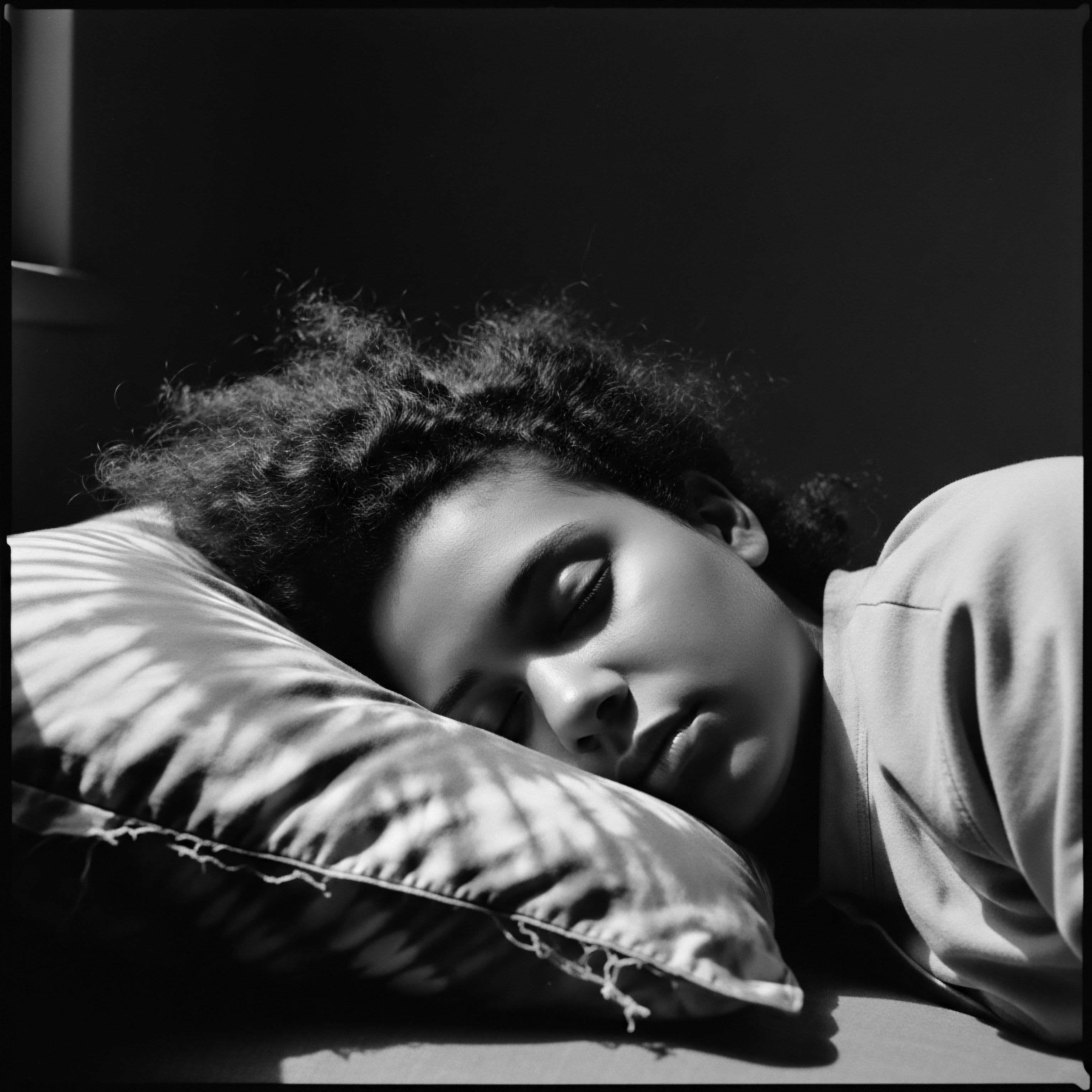
How do Nighttime Rituals Safeguard Hair’s Moisture?
The ritual of preparing hair for rest is a powerful, yet often undervalued, aspect of moisture preservation. Sleeping on cotton pillowcases can draw moisture from the hair, leading to dryness and breakage. This simple interaction with common fabric can undermine diligent daily care. The solution, an extension of ancestral wisdom, lies in creating a protected environment for the hair during sleep.
Enter the satin bonnet and silk pillowcase, contemporary symbols of hair care that echo the protective coverings worn by our forebears. These accessories allow hair to glide rather than cling, reducing friction and minimizing moisture loss. The use of bonnets has a historical basis in African cultures where head coverings were often used for protection, hygiene, and as symbols of status or spiritual significance. The modern application for moisture retention is a direct lineage of this protective principle.
Beyond external protection, nighttime care involves sealing in moisture applied during the day. Layering lipid-rich products, such as leave-in conditioners followed by a lightweight oil or butter, creates a lasting barrier against evaporation. This layering echoes the traditional method of applying natural oils and butters after moisturizing the hair, forming a seal that keeps water within the hair shaft for longer periods.
A powerful historical example of lipid use for hair is the practice of enslaved Africans during the transatlantic slave trade. Stripped of their traditional tools and methods, they still found ways to care for their hair, often relying on available fats and oils such as bacon grease or butter. This desperate adaptation for hair maintenance, though born of harsh circumstances, underscores the deep-seated understanding of lipids’ role in preserving hair integrity, even when traditional ingredients were absent. It was a testament to the resilience of ancestral practices and the enduring need for moisture.
- Satin Bonnets ❉ Provide a smooth, low-friction surface for hair during sleep, preventing moisture absorption by fabric and reducing tangles and breakage.
- Silk Pillowcases ❉ Offer similar benefits to satin, allowing hair to retain its natural oils and moisture, supporting hair’s health.
- Hair Oiling Before Sleep ❉ A practice that seals in moisture from hydrating products, providing an overnight lipid barrier that aids in softness and elasticity.
These practices, whether ancient or contemporary, collectively highlight the truth that lipids are not just an ingredient; they are partners in our hair’s journey, crucial for defense against moisture loss, and deeply woven into the heritage of textured hair care. They allow our strands to remain supple, strong, and vibrant, carrying forward the stories of those who cared for them long before us.

Reflection
The journey through the intricate world of lipids and their profound connection to textured hair’s defense against moisture loss brings us to a quiet moment of contemplation. We have witnessed how these seemingly simple molecules, from the internal composition of the hair fiber to the external applications of ancestral oils, stand as enduring testaments to the wisdom embedded within our heritage. The story of textured hair is, at its heart, a narrative of adaptation, ingenuity, and a deep, intuitive understanding of nature’s offerings.
The enduring significance of lipids lies in their capacity to bridge the biological with the cultural. From the high lipid content within Afro-textured hair itself—a biological fact often countered by environmental realities—to the generations of hands that learned to apply shea butter, castor oil, and other plant-derived emollients, the purpose remains constant ❉ to protect, to nourish, to preserve. These acts of care were never isolated; they were rituals of community, of self-expression, and of defiance against forces that sought to diminish identity.
The “Soul of a Strand” echoes through these practices, a reminder that each coil and kink carries not only its unique physical properties but also the weight and beauty of history. The pursuit of moisture retention in textured hair is not a modern trend; it is a timeless endeavor, a continuous conversation between our hair’s inherent needs and the knowledge inherited from those who came before. As we continue to learn, to discover, and to innovate, let us always remember that the deepest insights often reside in the traditions that have sustained us for centuries. The legacy of lipids in textured hair care is a luminous thread, binding past to present, and guiding us toward a future where every strand tells a story of strength, beauty, and belonging.

References
- Coderch, L. Oliver, M. A. Martínez, V. Manich, A. M. Rubio, L. & Martí, M. (2017). Exogenous and endogenous lipids of human hair. Skin Research and Technology, 23(4), 479–485.
- Cruz, C. F. Matamá, T. & Cavaco-Paulo, A. (2013). Keratins and lipids in ethnic hair. International Journal of Cosmetic Science, 35(3), 244–249.
- Feughelman, M. (2016). A model for the mechanical properties of the α-keratin cortex. Textile Research Journal, 64(4), 232–239.
- Ghassemi, F. Ghassemi, A. & Ghassemi, M. (2012). The secret of ancient Egyptian beauty. Arab News.
- Leerunyakul, K. & Suchonwanit, P. (2020). Asian hair ❉ A review of structures, properties, and distinctive disorders. Clinical, Cosmetic and Investigational Dermatology, 13, 309–318.
- Lopresti, P. Papa, C. & Kligman, A. (1968). Hot comb alopecia. Archives of Dermatology, 98(3), 234-238.
- Martínez, V. Arévalo, F. Arnabat, J. & Coderch, L. (2021). A study shows that the differences between African, Caucasian and Asian hair are determined by their lipid distribution. Biotech Spain.
- Oliver, M. A. Marti, M. Coderch, L. & Carrer, V. (2019). Lipid loss from hair by surface and internal modification. Scientific Reports, 9(1), 9834.
- Rawlings, A. V. (2007). Ethnic skin and hair—physiological differences and their implications for the development of new products. Clinics in Dermatology, 25(4), 395–403.
- Sugino, K. Yasuoka, J. & Nakajima, H. (1994). Ethnic difference of ceramide content in human stratum corneum. Journal of Dermatological Science, 7(3), 163–166.
- Tiwari, S. Bhardwaj, V. & Singh, R. (2023). The what, why and how of curly hair ❉ a review. Clinical, Cosmetic and Investigational Dermatology, 16, 297–308.
- Uchegbu, I. Aljohani, T. & Koli, M. (2023). The Genomic Variation in Textured Hair ❉ Implications in Developing a Holistic Hair Care Routine. MDPI.
- Vincent, M. & Lenzy, Y. (2015). Contemporary African-American Hair Care Practices. Journal of Clinical and Aesthetic Dermatology, 8(5), 29–36.
